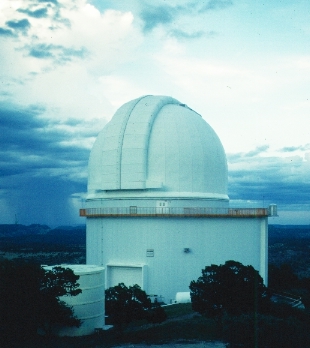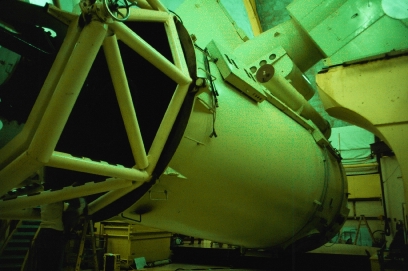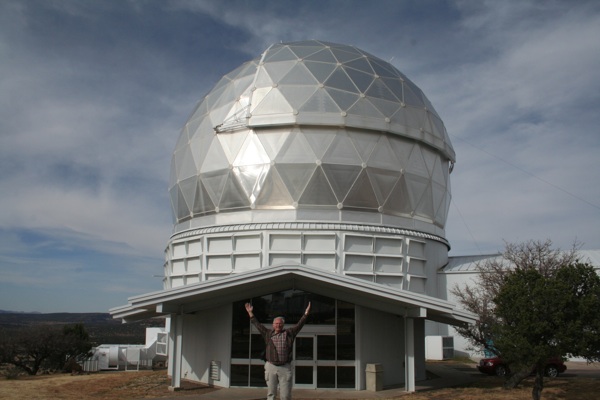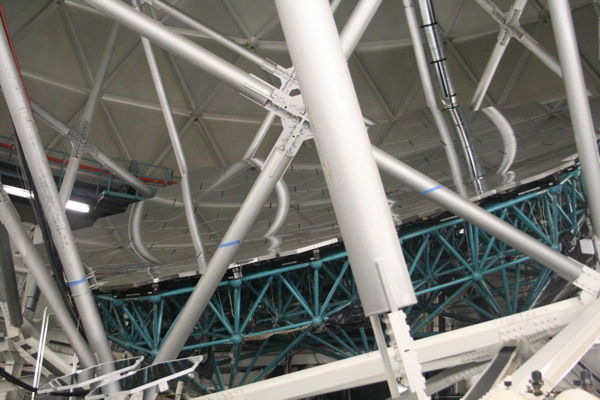

The largest telescope on Mt. Locke proper is the 2.7-meter (formerly 107-inch) Harlan J. Smith telescope, completed in 1968 with substantial support from NASA (thereby ensuring that a fair fraction of time would be available for planetary science). The site also includes the 2.1-meter Struve telescope, the 30- and 36-inch reflectors, and, on adjacent Mt. Fowlkes, the 9.2-meter (or 11-meter, but that's a religious war I have no stake in) Hobby*Eberly Telescope. Mt. Locke only looks like a mountain from the Fort Davis side to the south; the land to the north is higher so it's only a hill from that side. Among these, the 2.7-meter is the largest telescope I know of which uses a solid tube rather than an open framework to support the optical components.
The 107-inch has an unfortunate bit of notoriety in the astronomical
community, as the victim of a handgun assault. Courtesy of
Firearms are very common in Texas. Astronomer Brian Warner had his tongue only slightly in cheek when he remarked that "Jeff Davis County is about the size of Israel - and slightly better armed." The prophecy inherent in the aphorism came to pass. The full precipitating causes may never be known, but one February night in 1970 a McDonald Observatory employee (not a Texan, but an Ohioan newly hired from another observatory!) suffered a breakdown and carried a pistol to the observing floor of the 107-inch telescope. He fired a shot at his supervisor, and then unloaded the rest of the clip into the primary mirror. Happily, fused silica is more resilent than ordinary glass, and the big mirror did not break. The craters have been bored out and painted black to reduce any light-scattering effect, and the end result is simply a slight reduction in the efficiency of the telescope. It is now the equivalent of a 106-inch telescope. The incident made the national television news, with Walter Cronkite describing it before a projection showing the wrong telescope upside down.
 |
 |
Currently, the 36-, 82-, and 107-inch telescopes are listed as open for public viewing programs one or more nights a month. In the dark skies of West Texas, that must be really cool. You can explore the area starting with this satellite view from Google Maps.
The 11-meter (usually asterisked, its design uses "only" about 9 meters at a time) HET represents an innovative way to get aperture for less money. Move the detector, not the mirror. A spherical primary mirror gives identically aberrated images in all directions, which can be corrected over a small field by local optics. The really bright idea (in my view) was pointing the telescope off zenith on a rotatable mount, giving access to much of the visible sky. A precision tracking mount lets cameras or spectrographs follow the moving target image for as much as an hour. These views include the dome (with tower putting an alignment laser at the mirror's center of curvature) and a view ofthe telescope (whch is hard to photograph because it fills the dome). The segmented mirror shows its curvature through the bent reflections of support struts that hold up the tracking and detector assembly.
 |
 |
Last changes: 7/2014 © 2000-2014